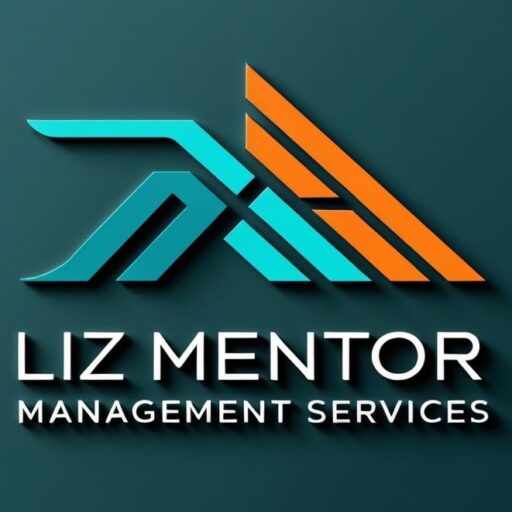Benchmarking – Measuring and Elevating Call Center Performance
In any call center, excellence is not just about handling calls; it’s about consistently improving the quality, efficiency, and effectiveness of every interaction. Module 8, Benchmarking, is a cornerstone for achieving this goal. It equips call center professionals with the tools and insights to measure performance, identify gaps, and implement strategies that elevate both individual and team results. Benchmarking is more than numbers—it’s about understanding what works, learning from it, and applying those lessons to drive better outcomes.
What is Benchmarking?
At its core, benchmarking is the practice of comparing performance metrics against established standards or industry best practices. In a call center context, this involves analyzing key performance indicators (KPIs) such as call handling time, first-call resolution, customer satisfaction, and conversion rates. By systematically measuring these factors, organizations can pinpoint areas for improvement, celebrate successes, and create a culture of continuous enhancement.
Benchmarking is particularly powerful because it turns abstract concepts like “good service” or “effective communication” into measurable, actionable data. Instead of guessing whether performance is up to par, call center managers and agents can rely on objective evidence to guide decision-making.
Benchmark Metrics: Identifying What to Measure
Not all metrics are created equal. The value of benchmarking lies in selecting the right indicators that truly reflect the performance and customer experience. Common call center metrics include:
Average Handling Time (AHT): Measures how long it takes to complete a call from start to finish. Balancing efficiency with quality is crucial; faster is not always better if the customer’s issue isn’t fully resolved.
First Call Resolution (FCR): Indicates the percentage of calls where the customer’s issue is resolved on the first attempt. High FCR rates are strongly correlated with customer satisfaction and loyalty.
Customer Satisfaction (CSAT): Collected through post-call surveys, CSAT reflects the customer’s perception of the service received.
Service Level: Tracks the percentage of calls answered within a set time frame, often tied to staffing and scheduling strategies.
Agent Utilization and Adherence: Measures how effectively agents manage their time and follow prescribed schedules and procedures.
These metrics provide a comprehensive view of both operational efficiency and the quality of customer interactions. They serve as the foundation for benchmarking, helping call centers establish performance targets and monitor progress.
The Benchmarking Process: Steps to Success
Benchmarking is not a one-time exercise; it is a structured, ongoing process. To maximize its impact, organizations typically follow a sequence of steps:
Identify Objectives: Determine what you want to achieve with benchmarking. Are you trying to improve customer satisfaction, reduce call times, increase sales, or enhance agent engagement? Clear objectives guide the selection of relevant metrics.
Collect Data: Gather performance data from internal systems, customer feedback, and, where appropriate, external sources such as industry reports or competitor analyses. Reliable data is the backbone of meaningful benchmarking.
Analyze Performance: Compare current metrics against historical performance, organizational standards, or industry benchmarks. Look for trends, outliers, and gaps that indicate areas for improvement.
Implement Improvements: Based on insights, develop and execute action plans. This might involve additional agent training, process redesign, technology enhancements, or workflow adjustments.
Monitor and Adjust: Benchmarking is an ongoing process. Continuously monitor performance, reassess targets, and refine strategies to sustain improvement over time.
Benchmarking and Continuous Improvement
The true power of benchmarking lies not in measurement alone, but in how the insights are applied. Effective benchmarking fosters a culture of continuous improvement. Agents can see where they excel and where they need to grow, while managers can implement targeted interventions to enhance overall team performance.
For example, if benchmarking reveals that first-call resolution is below industry standards, the call center might introduce specialized training sessions, create detailed knowledge bases, or implement new call routing strategies. By continuously measuring the impact of these interventions, the organization ensures that improvements are real, measurable, and sustainable.
Benchmarking Beyond Numbers
While metrics are essential, benchmarking also involves qualitative assessments. Understanding the “why” behind the numbers is just as important as the numbers themselves. For instance, a high average handling time might indicate thorough problem-solving, but it could also point to inefficient processes or lack of agent confidence. Surveys, call monitoring, and agent feedback help provide context to the quantitative data.
Additionally, benchmarking can incorporate best practices from top-performing peers or industry leaders. Observing how other call centers achieve high customer satisfaction or operational efficiency provides valuable lessons that can be adapted to your own environment.
Benefits of Benchmarking in Call Centers
Implementing a robust benchmarking process offers numerous benefits for call center operations:
Improved Customer Experience: By identifying performance gaps and addressing them, agents can provide faster, more accurate, and more satisfying service.
Enhanced Agent Performance: Benchmarking gives agents clear expectations and feedback, fostering skill development and confidence.
Operational Efficiency: Insights from benchmarking inform staffing, scheduling, and process optimization, reducing costs and improving throughput.
Strategic Decision-Making: Data-driven insights enable managers to make informed decisions, set realistic targets, and plan resource allocation effectively.
Cultural Impact: A benchmarking mindset promotes accountability, transparency, and a shared commitment to excellence among the team.
Implementing Benchmarking Without Overwhelm
For call centers new to benchmarking, the process can seem daunting. The key is to start small and gradually scale. Focus on a few critical metrics that align with organizational goals, and progressively add more as the team becomes comfortable with the process. Technology can also play a significant role—call center dashboards, CRM systems, and analytics platforms simplify data collection, analysis, and reporting.
Equally important is agent buy-in. Employees should understand that benchmarking is not about surveillance or criticism; it’s about supporting growth, celebrating successes, and equipping them with the insights to perform better. When approached with transparency and collaboration, benchmarking becomes a motivational tool rather than a source of stress.
Benchmarking as a Competitive Advantage
In today’s highly competitive business landscape, call centers that benchmark effectively gain a tangible advantage. They operate with greater efficiency, respond more effectively to customer needs, and cultivate a workforce that continuously improves. Benchmarking transforms raw data into actionable knowledge, and knowledge into performance.
Furthermore, benchmarking sets the stage for innovation. By regularly assessing processes and outcomes, call centers can identify opportunities to implement new technologies, streamline workflows, and introduce creative solutions that enhance customer experience and operational efficiency.
Conclusion: Making Benchmarking Work for You
Module 8: Benchmarking provides call center professionals with a structured approach to measure, analyze, and improve performance. By focusing on key metrics, analyzing results, and implementing improvements, call centers can achieve higher levels of efficiency, customer satisfaction, and employee engagement.
The essence of benchmarking is not just measurement—it is a mindset. It encourages continuous learning, accountability, and proactive problem-solving. Agents equipped with this mindset approach every interaction with purpose, managers can make data-driven decisions, and organizations can foster a culture of excellence.
In the end, benchmarking transforms call centers from reactive operations into proactive, high-performing hubs. It empowers employees, satisfies customers, and strengthens the organization’s overall competitive edge. For any call center striving for excellence, benchmarking is not optional—it is essential.



